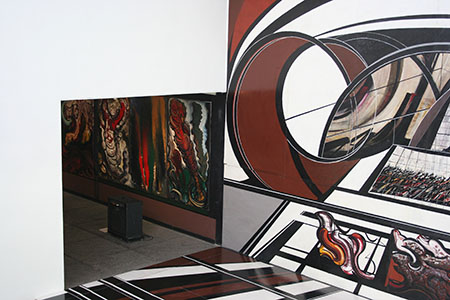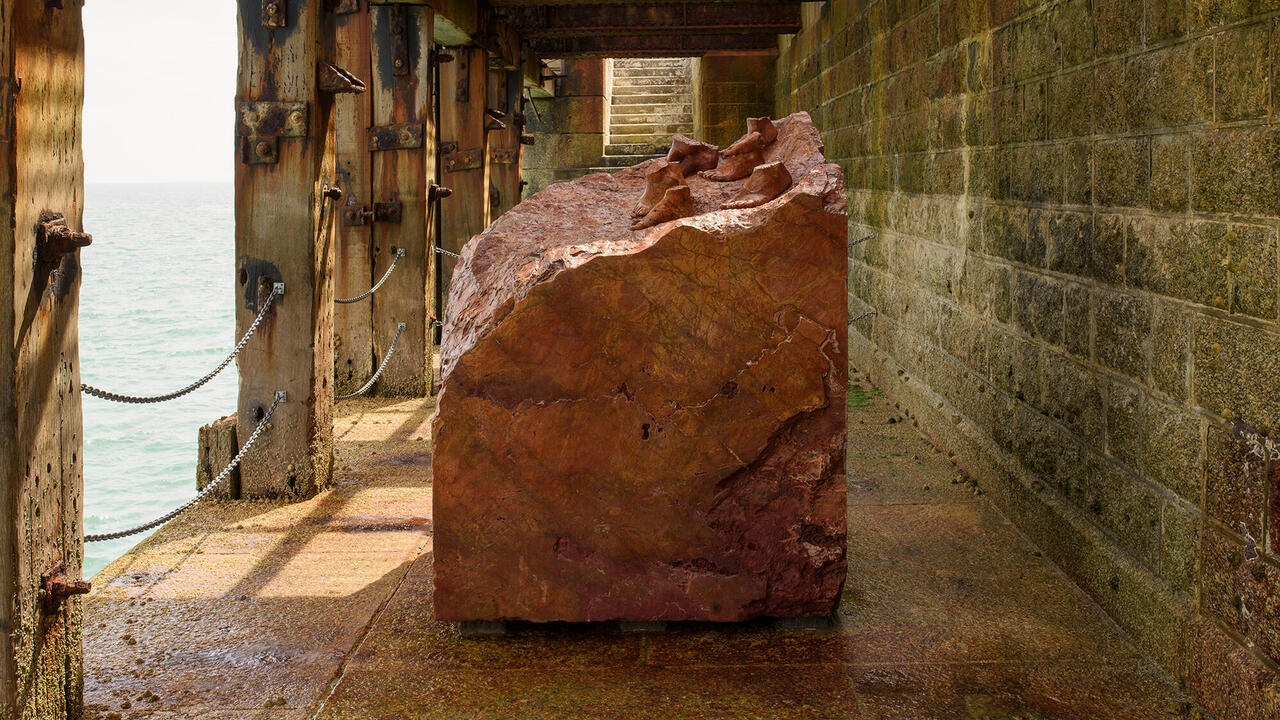Laureana Toledo

What is the link between Birmingham, UK, and Mexico City, Mexico? The obvious answer seems to be: none. Is there no sisterhood one might venture between these two places, aside perhaps from football fandom?
In Correspondencia (Correspondence, 2008–09) a lyrical exploration of process, place, identity, collaboration and crossings, Mexican artist Laureana Toledo and Birmingham bassist John Taylor (of Duran Duran) reflected, questioned and wove possible connections, offering translations and displacements between the two cities; and between visual arts and music, between genders, and across generations.
Correspondencia consisted of various parts, the first being a large face-to-face two-channel Super-8 film projection looping with a smaller alternate version on a small television. This was the result of a strange coincidence, aleatory processes and certain imposed rules in a game. Toledo shot scenes of Birmingham while Taylor shot scenes of Mexico City; their long conversations over time gave the film its structure. The pretext is that a city, in all its specificity, can evoke an entirely different place through certain sounds, architecture, light, shadows or reflections at a certain time of day, and that this is how we build identity. The idea is a correspondence, not just between two cities and their cultures, but between two people who begin emailing as strangers and ended up collaborating as colleagues, working outside of their usual media.
If the City of Palaces and the City of a Thousand Trades were the film’s main characters, the supporting cast consisted of Taylor and Toledo, scripted in both English and Spanish, and soundtracked by popular rock music from both cities. The result was dislocation: sometimes it was hard to distinguish which city was which, or who spoke in the place of whom; but while this could have resulted in confusion, it was a successful fusion. The opening sequence included a shot of a sign that reads ‘Hollywood’, as if to displace us further, but here Hollywood is the suburb of Birmingham where Taylor was born. We see panoramic shots of both cities, housing projects and buildings (but seldom monuments); an enormous train; cars; Toledo in front of Selfridges Birmingham and Taylor coming out of the subway in Chapultepec; we hear Maldita Vecindad and Musical Youth. Taylor and Toledo echo each other’s words, in English and Spanish – they utter each other.
The second component was Proximo (2009–11), a newspaper that Taylor created and designed with Patty Palazzo, using stills from the film and fragments of the dialogues as news, in addition to an intertwined map of both cities. In the shop of the Sala de Arte Público Siqueiros, in addition to colourful posters printed with the responses Toledo received via SMS while on the search for bassists named John in Birmingham, visitors could find a series of albums (produced with the participation of Eric Namour’s el nicho experimental store) selected following the same set of ‘rules’ that served to construct the film, and consisting of albums with bassists called John, albums where the bassist is the main protagonist, or albums from Birmingham, UK, or Birmingham, Alabama.
Finally, we found Taylor’s 1982 Peavey amp, the one he used to record Duran Duran’s second album, Rio (1982), and the playlist of the recording playing through it: just the basslines from an entire 2009 concert at the Fillmore in San Francisco. Though seemingly simple in its form, this part of Correspondencia condensed the questions that Toledo used as pretexts for her exhibition: the apparent ‘secondary’ condition or roles – not only of Birmingham or Mexico City as cities but also of women in the art world or of bassists in bands. The sometimes euphoric beauty and repetitive nature of the music, the simplicity of the black box from which it emanated – disembodied and abstracted from the rest of the instruments and voices – makes it a base onto which the viewer/listener could project: rendering it primary, essential.
Toledo placed Taylor’s amp close to the giant space filled with David Alfaro Siqueiros’s murals (the gallery was once the famous muralist’s home and is filled with his powerful works), and thus the show seems to beg another, less obvious question: is there a relationship between muralism and music? Toledo brought to play an interaction between both the pieces and the exhibition space. Are pop music and Siqueiros’s Marxist/abstract murals as distant as one might think? As one listened to Taylor pluck the chords, while in a space filled with Siqueiros’s dynamic, almost dizzying shapes, one felt propelled into a near-synaesthetic state that could serve as a possible answer.
















